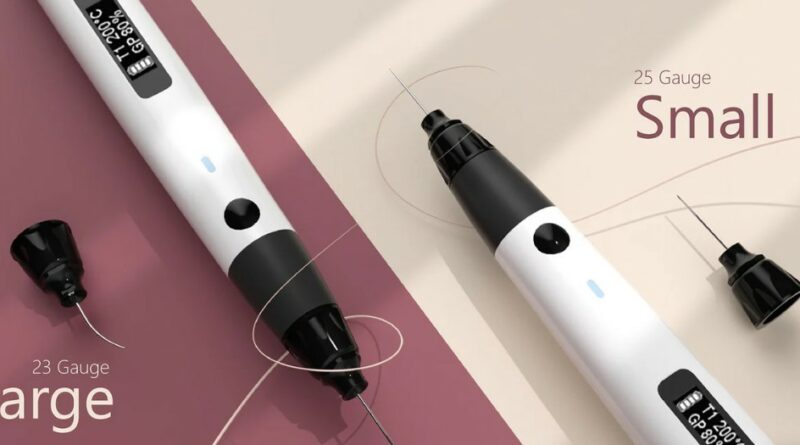Enhancing Endodontic Procedures: The Ultimate Collection of Endodontic Instruments
Endodontic procedures require precision, skill, and the right set of endodontic instruments to ensure successful treatment outcomes. From root canal therapy to advanced microsurgical interventions, dental professionals rely on a wide range of specialized tools. In this comprehensive guide, we explore the ultimate collection of endodontic instruments, their applications, and how they enhance procedural efficiency and patient outcomes.
1. Essential Hand Instruments for Endodontics
A. Endodontic Explorers
Endodontic explorers are designed to locate canal orifices with precision. These sharp, fine-tipped instruments help in detecting calcified canals and assessing root canal anatomy before initiating treatment.
B. Endodontic Excavators
Endodontic excavators assist in the removal of decayed dentin and pulp tissue. Their elongated working ends allow access to deep cavity preparations while maintaining control.
C. Spreaders and Pluggers
Spreaders and pluggers are used during obturation to ensure proper condensation of gutta-percha. Spreaders facilitate lateral compaction, whereas pluggers assist in vertical condensation, optimizing the sealing of the root canal.
2. Rotary and Reciprocating Instruments
A. Nickel-Titanium (NiTi) Rotary Files
Modern endodontic treatments utilize NiTi rotary files, which offer superior flexibility, resistance to cyclic fatigue, and enhanced shaping capabilities. These files significantly reduce procedural time while maintaining the integrity of the root canal system.
B. Reciprocating Files
Reciprocating files are an innovation in root canal instrumentation. These files reduce file separation risks by employing a back-and-forth motion, minimizing torsional stress and preserving the canal’s natural anatomy.
C. Gates-Glidden Drills and Peeso Reamers
Gates-Glidden drills and Peeso reamers are commonly used for coronal flaring and post-space preparation. Their design allows for controlled dentin removal, aiding in efficient access to the root canal system.
3. Advanced Endodontic Irrigation Devices
A. Ultrasonic Irrigation Systems
Ultrasonic irrigation systems enhance the efficacy of canal disinfection by activating irrigants like sodium hypochlorite and EDTA. These systems help remove debris, biofilm, and smear layers more effectively than conventional syringe irrigation.
B. EndoVac Apical Negative Pressure Irrigation
The EndoVac system utilizes negative pressure irrigation to deliver solutions safely to the apical third of the canal, preventing extrusion beyond the root apex and ensuring superior bacterial elimination.
C. GentleWave System
The GentleWave system employs multisonic fluid dynamics to clean and disinfect complex root canal anatomies, reaching areas where traditional files and irrigants may struggle to access.
4. Endodontic Obturation Systems
A. Gutta-Percha and Carrier-Based Obturation
Gutta-percha remains the gold standard for root canal filling. Carrier-based obturation systems, such as Thermafil, facilitate efficient placement and adaptation of gutta-percha within the canal.
B. Bioceramic Sealers
Bioceramic sealers provide superior sealing properties, biocompatibility, and antimicrobial effects. They enhance root canal obturation by filling irregularities and improving long-term treatment success rates.
C. Warm Vertical Compaction Devices
Devices like System B and Elements Free are widely used for warm vertical compaction, ensuring a hermetic seal within the root canal space.
5. Endodontic Microsurgical Instruments
A. Micro Mirrors and Ultrasonic Tips
Endodontic microsurgery requires specialized instruments such as micro mirrors for enhanced visualization and ultrasonic tips for precise root-end preparation.
B. Microsurgical Burs
Microsurgical burs, including zirconium nitride-coated burs, offer precise bone removal and minimal thermal damage, crucial for successful apicoectomy procedures.
C. Suturing Materials and Microsurgical Scissors
Post-surgical healing is optimized using fine suturing materials like PTFE or microsurgical nylon, along with specialized scissors for delicate tissue management.
6. Digital Endodontic Tools for Precision
A. Electronic Apex Locators
Electronic apex locators improve working length determination, enhancing the accuracy of canal instrumentation and reducing radiographic dependence.
B. Cone-Beam Computed Tomography (CBCT)
CBCT imaging provides a three-dimensional assessment of root canal anatomy, allowing for precise diagnosis and treatment planning in complex cases.
C. Endodontic Microscopes
Endodontic microscopes offer high magnification and illumination, aiding in minimally invasive techniques and improving procedural success rates.
Conclusion
The evolution of endodontic instruments has significantly improved the efficiency, precision, and predictability of root canal treatments. By integrating advanced tools, digital technologies, and biocompatible materials, endodontists can achieve superior patient outcomes with minimized complications.




